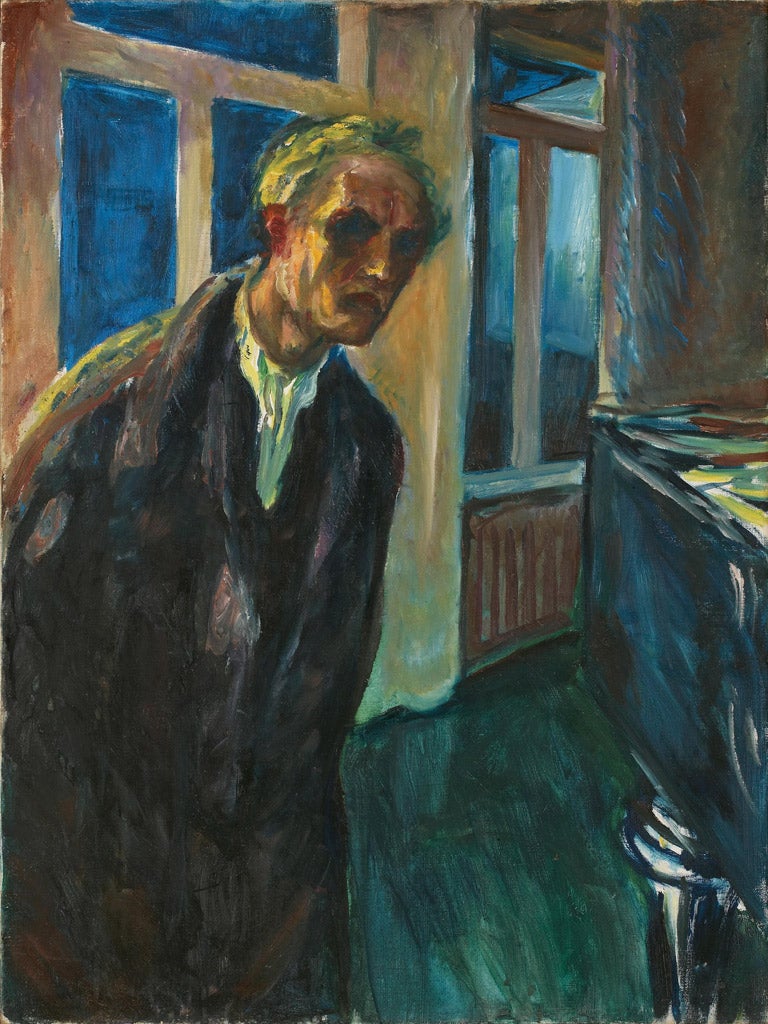A man and his misery
Munch was a master of emotion, alienation and loss. As Tate Modern's new show opens, Adrian Hamilton asks what drove the painter of pain

The first thing to say about Tate Modern's new exhibition of Edvard Munch is that it doesn't have his The Scream, in any of its four versions. Not that this is a bar to enjoying it. Munch is an artist more than capable of surviving the loss of his most famous image, and there are still plenty of works here to enjoy. What is striking is that the curators make quite such a point of leaving it out.
The point, says the Munch Museum of Oslo, responsible for this travelling show in the run-up to the 150th anniversary of the artist's death next year, is that Munch is too often seen just as a 19th-century artist. In fact he lived most of his life (he was born in 1863 and died in 1944) in the 20th century and was a thoroughly modern man. Hence the title: Edvard Munch: The Modern Eye.
And what forms the basis of this "path-breaking rereading of the artist's works"? The fact that he read lots of newspapers, took photos and went to the cinema. Which artist of his time didn't, one might ask. The only special fact about Munch was that he took his dog with him to the cinema; if the dog barked, he left, as the film was obviously not up to it.
The dog would certainly have howled at the short films his master shot of Oslo and his surroundings. They are truly execrable, for all the show's efforts to make them viewable now. The still photographs are more revealing for his obsession with picturing himself. But as experiments with the new art they could hardly be described as "modern" or exciting, except for a glorious shot of himself painting on the beach clad in nothing but a loincloth, and another of him fully naked in his garden brandishing a sword. The dog must surely have writhed around in helpless delirium at those.
No, Edvard Munch didn't have a modern eye. He was never part of the revolution that took over the arts in the 20th century. As a painter – and he was a very professional one – he was not oblivious to the trends in art. As a young man he spent most of his time (as most Scandinavian creative artists did) abroad. He absorbed the lesson of the post-impressionists and German expressionists with care. You can see Vuillard in his wallpaper patterns, Vallotton in his theatrics and Kirchner in his colouring. If he didn't experiment with cubism or abstraction it was not because he wasn't aware of them, but because he didn't feel the need to.
What he did have were very modern obsessions, above all with himself. The themes he set out from his earliest paintings were the ones he pursued all his life: loneliness, illness, pain and loss. And if he appeals today – as he clearly does from the numbers thronging to see this show in its previous locations in Paris and Frankfurt – it was because he found a language and a directness that still unsettles today. Even without The Scream, his Puberty from 1914-16 is pretty near the knuckle in its vision of a naked young girl at the edge of sexuality.
His successive pictures of The Kiss, with all the resonance of blood-sucking and destructiveness, and his images of figures apart by the beach and girls on the bridge are replete with the symbolism of the late 19th century. But their visual language has an intensity and an energy which comes from a composition and a brush very much Munch's own. Not for nothing was he one of the great print artists of the last century. His grasp of the striking image to communicate emotion was way ahead of his time.
The curators would have you believe that it was cinema which inspired his dramatics, the figures rushing towards you, the faces staring directly at you, cut off below the shoulders. And that may have been the case. But Munch already had that sense of rushing momentum in The Scream of 1893 and other early pictures.
One coup is the presence in this London showing of all six versions of the Weeping Woman from 1907-09. It's a tired image in itself, the naked girl with the head bowed, but in the different states you see an artist playing with space, textures and colour to achieve different levels of claustrophobia and pathos.
The exhibition ends as it begins – with self-portrait. It was the theme Munch pursued obsessively all his life. These pictures form a stark contrast with so much of his other work in that the faces, even when they look at you, never engage with their eyes. They stare beyond, glance downwards or have their eyes obscured. In subject pictures he makes you feel as himself the raw emotion, but in his self-portraits you are at one remove, looking on an artist looking on himself.
For the full artist we will have to await the comprehensive show in Olso planned for next year, promising the largest ever display of his paintings. In the meantime you can enjoy this assembly of his works from the 20th century. Forget the interpretation. It's pretty specious. But do take pleasure in some marvellous works from a great image maker and a true artist.
Join our commenting forum
Join thought-provoking conversations, follow other Independent readers and see their replies
Comments
Bookmark popover
Removed from bookmarks